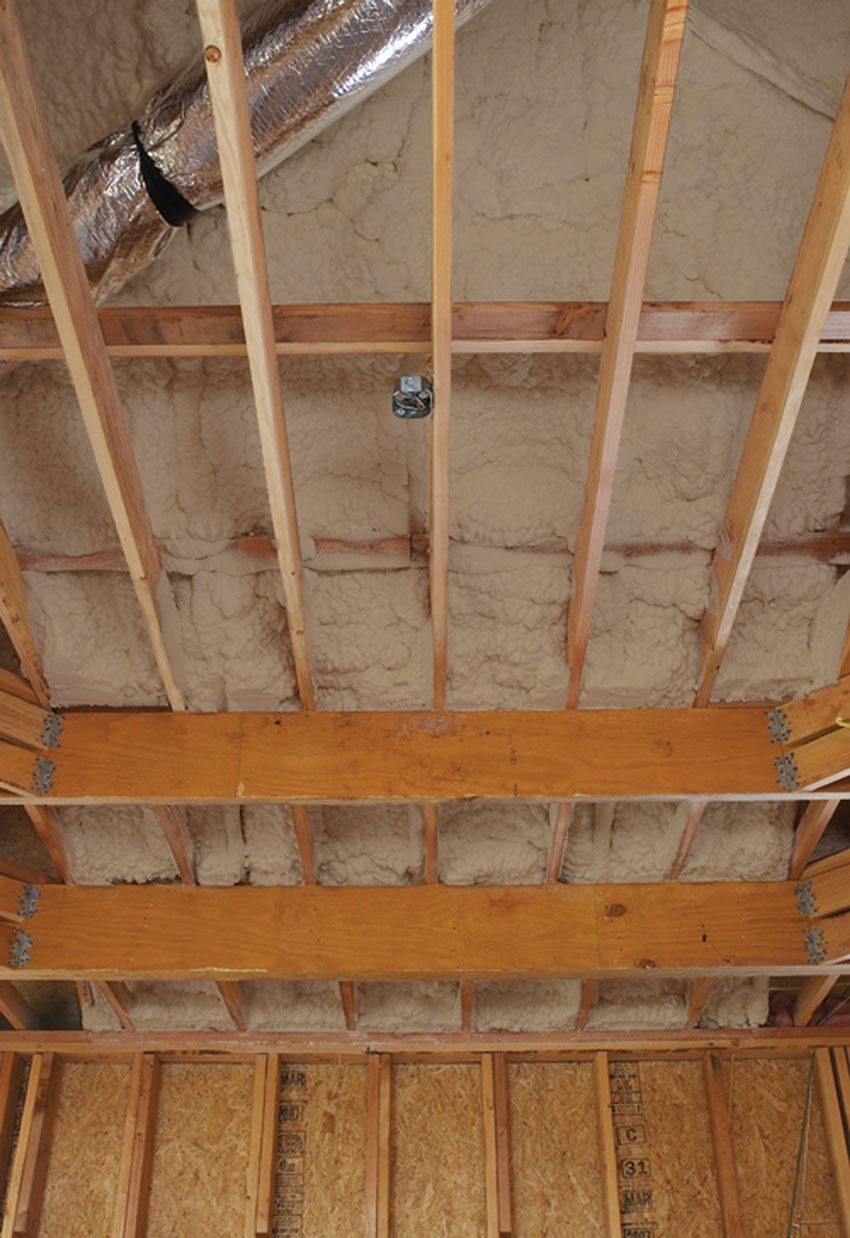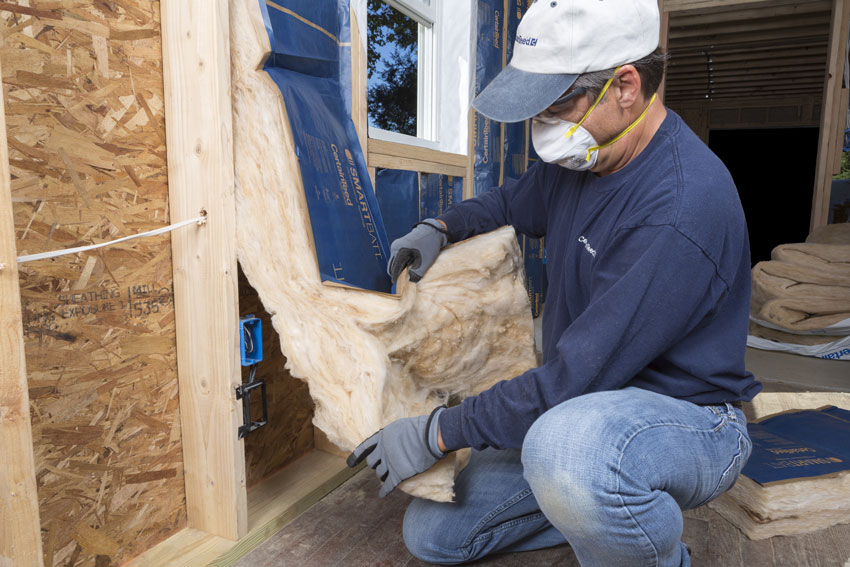Fire Prevention in the Modern Era
Insultation and Fire
Insulation serves many purposes in modern construction, from increasing energy efficacy to sound attenuation. But insulation is also critical to help ensure the safety of occupants in the event of fire. When specifying insulation from the point of view of fire safety, the goal should be to choose insulation products that will increase the potential for a best-case outcome in a fire—that is, one that allows all occupants to exit the building unharmed.
Fire Behavior
To understand the role of insulation in an assembly, one should first have a basic understanding of fire behavior. When a fire ignites, oxygen combines with fuel and heat in a sustained chemical reaction. If a fire is not put out at this point, it will continue to grow if more fuel is available. Through convection and radiation, more fuel sources ignite and the fire moves upward toward the ceiling. There, hot gases collect, and soon, flashover occurs. Flashover refers to the near-simultaneous ignition of most of the directly exposed combustible material in an enclosed area. When a fire is fully developed, it has reached all available fuel sources and temperatures reach a peak. Once a fire has consumed all available fuel, it begins to decay. This cooling phase of a fire typically lasts the longest.
As mentioned earlier, the point of a fire-resistant assembly is to contain a fire so that it does not spread to other rooms or other buildings, and to buy time so that occupants can safely exit. Drywall or gypsum board plays a huge role in the fire resistance of a wall assembly.
Gypsum rock contains about 21 percent (by weight) water, which is chemically combined with calcium sulfate. When exposed to fire, heat starts converting some of this water to steam, which effectively resists fire. The opposite side of the gypsum board wall remains cool until all water in the gypsum core has been converted to steam or until the gypsum board itself is breached by the flames. The characteristics of the board (e.g., its density or thickness) can affect its fire resistance. Type X drywall, which is required for fire-rated assemblies, contains a glass fiber reinforced gypsum core. The fibers reduce the extent and severity of cracks in the board when exposed to flame and heat, thus increasing the time it performs without failure.

Photo courtesy of CertainTeed Insulation
Although a popular choice for air sealing and increased R-value, spray foam insulation may not be an ideal choice when it comes to aggressive fire codes, unless it’s an Appendix X-rated foam.
Insulation Types for Fire-Resistant Assemblies
Common insulation types include fiberglass, mineral wool, cellulose, and spray foam. While all of these can be used to create fire-rated assemblies, only unfaced fiberglass and mineral wool are noncombustible materials. They will not ignite or burn; consequently, they will not react to fire prior to the flashover point. In fact, unfaced fiberglass and mineral wool are accepted as a fire block in wood frames. Combustible insulation products, even if treated with flame retardants, can potentially ignite, thus accelerating the growth stage of a fire and reducing the amount of time for occupants to safely evacuate. Choosing materials that reduce the ability for fire to react is key to ensuring fire safety.
To understand the differences between fiberglass and rock wool, let’s take a look at the manufacturing processes and performance characteristics of each. First, let’s clarify some terms. “Mineral fiber” insulation is a broad term that is used to categorize insulation composed principally of fibers manufactured from rock, slag, or glass, with or without binders. “Mineral wool” is one type of mineral fiber, and it refers to synthetic vitreous fiber insulation made by melting predominately igneous rock or furnace slag and other inorganic materials and then physically forming the melt into fibers. Mineral wool products are often called rock wool, slag wool, or stone wool.

Photo courtesy of CertainTeed Insulation
Fiberglass insulation comes in faced and unfaced batts and encapsulated batts; it can be also be blown into a wall cavity or loosely blown into a space like an attic.
Fiberglass
Fiberglass insulation is made from molten glass that is spun into fine microfibers. The raw materials, which include sand and glass, are heated in a glass-melting furnace to temperatures ranging from 1,500 to 1,700 degrees Celsius (2,700 to 3,100 degrees Fahrenheit).
During a process called forming, glass fibers are made from molten glass, and if producing batts, a binder is simultaneously sprayed on the fibers. The binder is essentially a glue that holds the fibers together—most fiberglass batts today also incorporate a “green,” plant-based binder that contributes to a healthier environment. Once the fibers are formed into a wool fiberglass mat, they can then be cured, cooled, backed (if they will include a facing), labeled, cut, and packaged. The trimmed edge waste from the mat and the fibrous dust generated during cutting and packaging are either recycled back into the manufacturing process or repurposed as other insulation products. The finished product is lightweight and low density, and it is easily compressed for packaging and transport.
Fiberglass is made from silica sand, one of the most abundant and renewable minerals on Earth. On average, it consists of 50 percent recycled post-consumer glass content, which can include recycled glass bottles, windshields, etc. Some insulation products are then faced with a vapor barrier.
Mineral Wool
Also called stone wool, mineral wool is made from tightly spun mineral fibers of natural stone and recycled steel. Like fiberglass, it can be produced as blankets or in loose-fill form. The raw material is loaded into a cupola in alternating layers with coke. As the coke ignites and burns, the mineral charge is heated to the molten state at a temperature of 1,300 to 1,650 degrees Celsius (2,400 to 3,000 degrees Fahrenheit). The molten mineral charge exits the bottom of the cupola in a water-cooled trough and falls onto a fiberization device.
At this point, various chemical agents may be applied to the newly formed fiber. An oil is applied to suppress dust and in part to anneal the fiber; sometimes a binding agent is added as well. Mineral wool is compressed to the desired density and cured in an oven before being cut into batts. The short fibers give mineral wool products a highly dense, rigid structure.
Most mineral wool produced in the United States today is produced from slag or a mixture of slag and rock. Most of the slag is generated by integrated iron and steel plants as a blast furnace byproduct; other sources of slag include the copper, lead, and phosphate industries. Rock wool contains an average of 10 to 15 percent recycled blast furnace slag, while slag wool contains an average of 70 percent recycled content.









